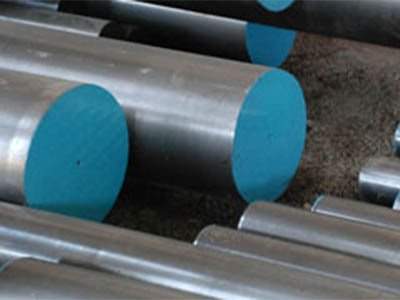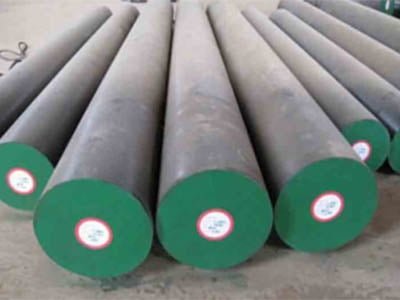Introduction

As we step into the year 2024, the world of manufacturing is poised for significant advancements in tool steel properties. In this blog post, we delve into the forecast for the future of tool steel properties, exploring emerging trends, cutting-edge research, and potential innovations that will shape the industry in the coming years.
Evolution of Tool Steel Properties: A Historical Overview
To grasp the forecast for tool steel properties in 2024 and beyond, it’s imperative to delve into the rich tapestry of their evolution. From their humble beginnings to the cutting-edge innovations of today, the journey of tool steel properties is a testament to the relentless pursuit of excellence in metallurgy and materials science.
The saga of tool steel properties dates back centuries, with early formulations emerging during the Industrial Revolution to meet the growing demands of manufacturing and machining. These primitive alloys, often crude in composition and limited in performance, laid the groundwork for subsequent advancements through trial and error.
As industrialization swept across the globe, the quest for stronger, more durable materials intensified, leading to significant breakthroughs in the late 19th and early 20th centuries. Pioneering metallurgists such as Robert Mushet and Henry Bessemer introduced revolutionary techniques for refining steel, unlocking new possibilities for enhancing its mechanical properties.
Emerging Trends in Tool Steel Composition
One of the pivotal drivers shaping the trajectory of tool steel properties lies in the perpetual evolution of steel compositions. This dynamic field is characterized by a ceaseless quest for innovation and enhancement, as metallurgists and materials scientists strive to unlock the full potential of tool steels for diverse applications.
At the heart of this evolution is the exploration and integration of new alloying elements into tool steel compositions. Traditionally, elements such as chromium, vanadium, and molybdenum have played critical roles in enhancing the mechanical properties of tool steels. However, in the quest for ever-improving performance, researchers are now venturing into uncharted territory, investigating the potential benefits of novel alloying elements such as cobalt, niobium, and tantalum. These elements offer unique properties that can impart superior strength, toughness, and wear resistance to tool steels, opening up new frontiers in material design and application.
In tandem with the exploration of new alloying elements, the optimization of heat treatment processes represents another frontier in the evolution of tool steel properties. Heat treatment plays a pivotal role in refining the microstructure of tool steels, thereby influencing their mechanical properties and performance characteristics. Recent advancements in heat treatment techniques, such as precise temperature control, rapid quenching methods, and novel annealing processes, have enabled researchers to tailor the properties of tool steels with unprecedented precision. By fine-tuning the heat treatment parameters, metallurgists can optimize the hardness, toughness, and dimensional stability of tool steels to meet the exacting demands of specific applications, from cutting and forming to stamping and extrusion.
Innovations in Material Processing and Manufacturing
In addition to the dynamic shifts in composition, the landscape of tool steel properties in 2024 is set to be profoundly shaped by groundbreaking innovations in material processing and manufacturing techniques. These advancements, poised on the cutting edge of technology, hold the potential to revolutionize the very essence of tool steel properties, heralding a new era of performance and versatility.
One of the most transformative technologies driving this revolution is additive manufacturing, also known as 3D printing. This disruptive technique enables the fabrication of complex geometries and customized designs with unprecedented precision and efficiency. By depositing successive layers of material, additive manufacturing allows for the creation of intricate tool steel components that would be impossible or prohibitively expensive to produce using traditional machining methods. This opens up a realm of possibilities for tool designers, who can now unleash their creativity and optimize the performance of tool steel components for specific applications, from intricate molds and dies to cutting-edge cutting tools and wear-resistant inserts.
Furthermore, advanced surface treatments represent another frontier in the evolution of tool steel properties. Surface treatments such as nitriding, carburizing, and PVD/CVD coatings have long been employed to enhance the wear resistance, corrosion resistance, and surface hardness of tool steel components. However, recent advancements in surface engineering techniques have taken these treatments to new heights, offering unprecedented control over surface properties and performance characteristics. For example, nanoscale surface modifications and plasma-based treatments enable precise tuning of surface roughness, lubricity, and adhesion, resulting in tool steel components that exhibit superior performance and longevity in demanding operating conditions.
Applications and Industry Implications

Forecasts of tool steel performance in 2024 have the potential to be transformative, with far-reaching implications for different industries and applications. Looking to the future, it is clear that advances in tool steel performance will have a profound impact on key industries such as automotive and aerospace, profoundly reshaping the landscape of product design, performance and cost-effectiveness. method.
In the automotive industry, the evolution of tool steel properties is poised to revolutionize vehicle design and manufacturing processes. Advanced tool steels with enhanced strength, toughness, and wear resistance will enable the production of lighter, more fuel-efficient vehicles without compromising safety or durability. From precision stamping dies and injection molds to cutting-edge machining tools and forming dies, tool steel components will play a pivotal role in shaping the vehicles of tomorrow, driving innovation and efficiency across the automotive supply chain.
Similarly, in the aerospace sector, the forecast for tool steel properties heralds a new era of performance and reliability in aircraft manufacturing and maintenance. With the advent of high-strength, high-temperature-resistant tool steels, aerospace engineers can push the boundaries of design complexity and operational efficiency, leading to lighter, more aerodynamic aircraft with reduced fuel consumption and emissions. Furthermore, advanced tool steels with superior wear and corrosion resistance will prolong the service life of critical components such as turbine blades, engine casings, and structural elements, enhancing safety and reliability in the skies.
Challenges and Opportunities Ahead
While the future of tool steel properties holds great promise, it also presents challenges and opportunities for researchers, manufacturers, and end-users alike. This section discusses some of the key challenges facing the industry, such as sustainability, cost-effectiveness, and regulatory compliance, as well as the opportunities for innovation and collaboration in addressing these challenges.
| Aspect | Explanation |
|---|---|
| Challenges | |
| Sustainability | Ensuring that tool steel production processes minimize environmental impact and resource depletion, while maximizing recycling and reuse of materials. |
| Cost-effectiveness | Balancing the need for high-performance tool steels with the cost of production, ensuring that the benefits outweigh the expenses for manufacturers and end-users. |
| Regulatory Compliance | Adhering to stringent regulations and standards governing materials usage, worker safety, and environmental protection to avoid legal penalties and reputational damage. |
| Opportunities | |
| Innovation | Leveraging advancements in materials science, manufacturing technologies, and process optimization to develop novel solutions that enhance tool steel properties. |
| Collaboration | Fostering partnerships and collaborations between researchers, manufacturers, and end-users to pool resources, share expertise, and address common challenges collectively. |
Conclusion
As we look ahead to 2024 and beyond, the future of tool steel properties appears bright, with exciting advancements on the horizon. By staying abreast of emerging trends, harnessing innovative technologies, and embracing collaboration across the industry, we can unlock new possibilities and elevate the performance, durability, and sustainability of tool steel for generations to come.
FAQ
Q: What are the key factors influencing the forecast for tool steel properties in 2024?
A: The forecast for tool steel properties in 2024 is influenced by a variety of factors, including advancements in metallurgy, materials science, manufacturing technologies, and industry demands.
Q: How can manufacturers adapt to the changing landscape of tool steel properties?
A: Manufacturers can adapt to the changing landscape of tool steel properties by investing in research and development, embracing new technologies, and collaborating with industry partners to stay ahead of emerging trends.
Q: What role do sustainability and environmental considerations play in the forecast for tool steel properties?
A: Sustainability and environmental considerations are increasingly important factors shaping the forecast for tool steel properties. Manufacturers are exploring ways to reduce energy consumption, minimize waste, and optimize resource usage in the production of tool steel, while also considering the recyclability and end-of-life management of tool steel products.
